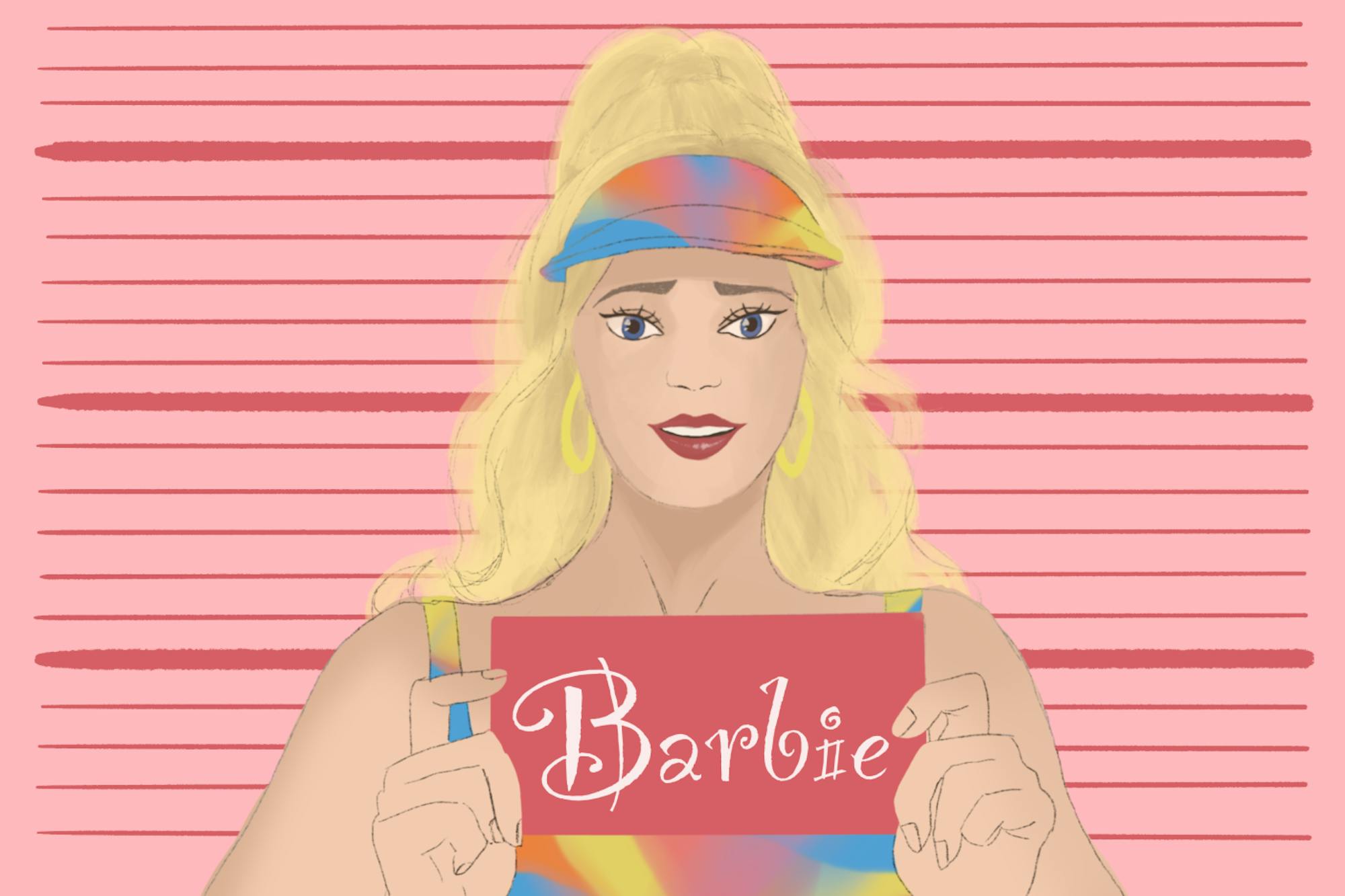“Life in plastic, it’s fantastic!”
As I stood in line at the Nugget Theater, waiting to see the new “Barbie” movie, the lyrics to “Barbie Girl” by Aqua echoed in my head. All I knew entering the theater was that “Barbie” was highly-anticipated — confirmed by the fact that the movie earned $162 million just in its opening weekend. Directed by Greta Gerwig, the director and screenwriter behind other blockbuster hits such as “Ladybird” and “Little Women,” the Barbie movie promised to be a feat of fourth-wave feminism. Much of the hype surrounding the movie was due to the way it spurred conversations of gender and femininity — calling into question what it means to be a woman — all from the perspective of a doll.
In the movie, Barbie travels from Barbie Land, where the “Barbies” have instituted a matriarchy running every aspect of doll life, to the Real World where things aren’t quite so perfect for Barbie. In the Real World, Barbie is forced to shed her “rose-colored glasses” as she struggles with some of the consequences of womanhood, such as rampant catcalling, insecurity and heightened self-awareness of one’s body and actions. Suddenly, life in plastic isn’t quite as fantastic.
The movie succeeded in its portrayal of a cognitive dissonance between Barbie and her environment. Barbie wakes up one morning as an existential doll, suddenly pondering matters of life and death contrary to the routine perfection of her life. As aspects of her life fall apart one-by-one, starting with expired milk and burnt toast and working their way up to cellulite and flat feet, she suddenly no longer feels like Barbie. The movie, however, was able to remain pink, plastic and glittery throughout — a clear testament to the Barbie brand.
The concept of an “Existential Barbie” is intriguing. If Barbie can be anything, why make her a doll plagued by thoughts of death and aging? Gerwig’s choice in crafting a more-reflective Barbie character feels clear. Yes, she may hope to ignite conversations of femininity and womanhood, but she also aims to provoke more abstract thoughts on humanity. Gerwig asks through the character of Barbie: What does it mean to be human?
After all, a doll is used to represent something separate from oneself. Playing with a doll is an escape for many children. Through controlling their doll’s actions and changing its appearance, children can project their own thoughts and desires onto the doll. Through “Barbie,” Gerwig seeks to explore matters of identity. By imbuing Barbie with a sense of existential restlessness, Gerwig implicates Barbie in better understanding her own role as a doll and a cultural icon. Throughout the film, Barbie recognizes that she is both a quintessential symbol of femininity in American culture and an individual in her own right. She is simultaneously an ideal as well as a bodied entity with thoughts and feelings of her own.
Gerwig, however, is endlessly clever for having the character of Barbie be the one to tackle this bifurcation of identity. While many in the audience cannot claim to represent a cultural ideal bigger than themselves, they directly contribute to the making of such ideals. As a doll, Barbie does not have the agency to act or feel for herself. She is the product of a million outside desires and thus serves as a representation of something much larger than her plastic body.
Gerwig’s “Barbie” subverts this understanding of Barbie as powerless, turning it on its head. Gerwig asks: What if we allowed Barbie to think, act and feel for herself? What if we disrupted her perfect lifestyle and gave her incredibly poignant, existential anxieties? What would Barbie be then? The rest of the movie is dedicated to answering these questions as the audience watches Barbie navigate the complexities of womanhood on top of the complexities of human existence.
Yet, even as Barbie shows brief moments of agency throughout the movie, such as when she escapes from imprisonment in a toybox in Mattel’s headquarters, she cannot escape her fate of being a doll. As a character, Barbie is still a representation of the thoughts and desires of the audience. This is where Gerwrig’s genius lies. By having Barbie undergo very real human challenges and wrestle with complex human emotions — she even cries for the first time — Gerwig presents Barbie as a character one can’t help but relate to. Just as an individual forms a relationship with their doll, the audience does the same with Barbie — particularly as they watch her wrestle with matters of identity in a convoluted world.
The beauty of “Barbie” lies in its acknowledgement of the struggle to “find oneself” in a chaotic world. Gerwig maintains that it is a universal experience to feel like you don’t belong and to feel like you are “swimming against the current.” The film speaks to the individual insecurities and fears of a greater audience, identifying a deeper desire to simply belong and feel loved. Ultimately, “Barbie” is right. For most, there will come a time in which everything you have ever known will fall and break and shatter. Like Barbie, you will find that nothing feels “right” or “perfect” anymore. The things that once defined you will no longer be able to do so. Perhaps, like in the case of Stereotypical Barbie, your feet will fall flat and you will have cellulite and your past ideals will no longer be the final authority of who you are. To embark on a journey of difficult growth is an inevitable aspect of our lives, which is ultimately Gerwig’s answer to the question of what it means to be human — an answer buried under all of the pink sparkle and glitter of “Barbie.”
Rating: ★★★★☆




